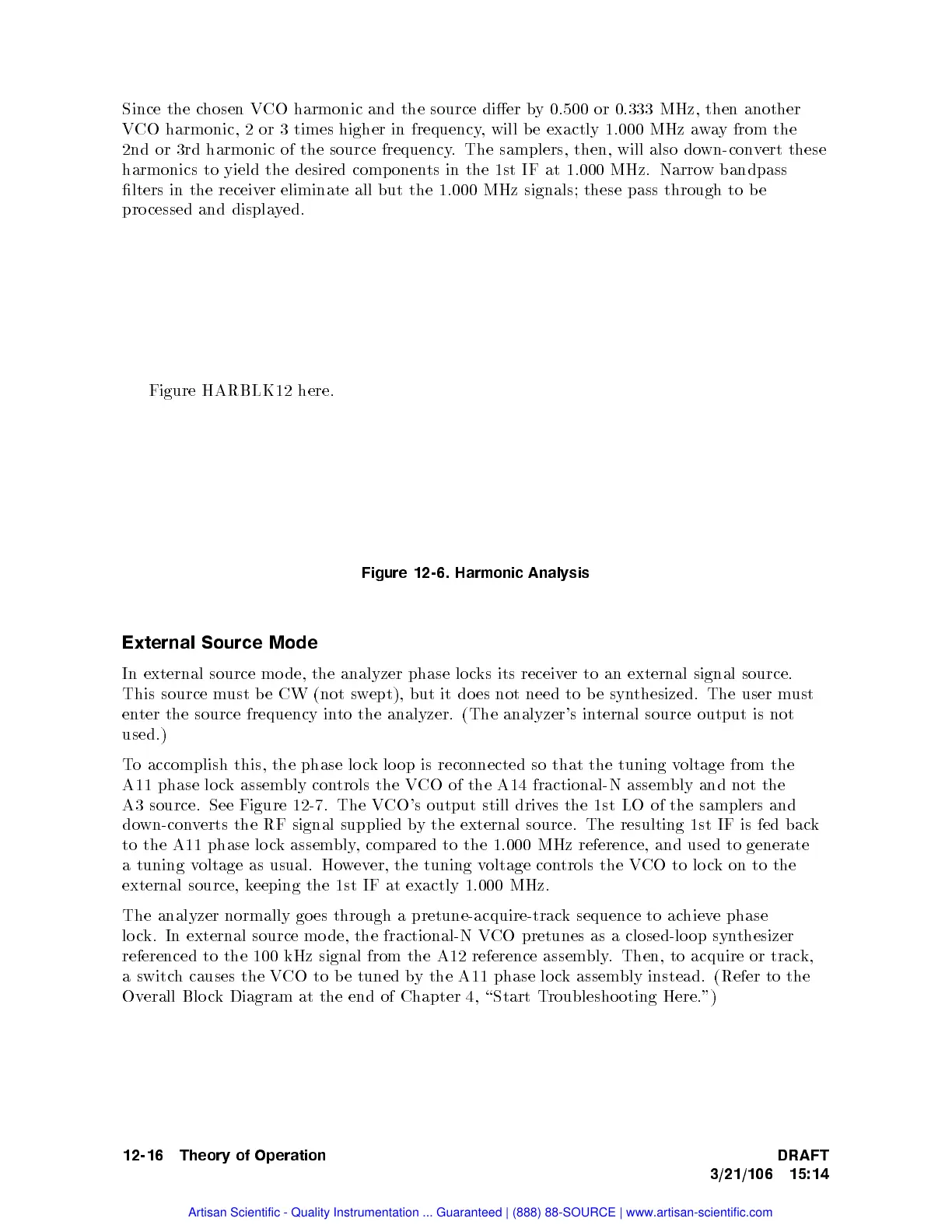Since the
chosen
VCO
harmonic and
the source
dier
b
y
0.500
or
0.333
MHz,
then
another
V
CO
harmonic,
2
or
3
times
higher
in
frequency
,
will
be
exactly 1.000
MHz a
wa
yfrom
the
2nd
or
3rd
harmonic of
the source
frequency.
The samplers,
then, will
also do
wn-conv
ert
these
harmonics to
yield the
desired
comp
onen
ts
in
the
1st
IF
at
1.000
MHz.
Narrow
bandpass
lters
in
the
receiv
er
eliminate
all but
the 1.000
MHz signals;
these pass
through to
be
pro
cessed and
display
ed.
Figure
HARBLK12
here.
Figure
12-6.
Harmonic
Analysis
External
Source Mode
In
external source
mo
de,
the
analyzer
phase
lo
c
ks
its
receiv
er
to
an
external
signal
source.
This
source
m
ust
b
e
CW (not
swept),
but
it
do
es
not
need
to
b
e
syn
thesized.
The
user
m
ust
en
ter
the
source
frequency
in
to
the
analyzer.
(The
analyzer's
internal
source output
is not
used.)
T
o
accomplish
this,
the
phase
lo
c
k
lo
op
is
reconnected
so
that
the
tuning
v
oltage from
the
A11 phase
lo c
k assem
bly con
trols
the
V
CO
of
the
A14
fractional-N
assem
bly
and
not
the
A3
source.
See
Figure
12-7
.
The
VCO's
output still
drives
the 1st
LO
of
the
samplers
and
do
wn-con
v
erts
the
RF
signal
supplied
b
y
the
external
source. The
resulting 1st
IF is
fed bac
k
to the A11 phase lo c
k assem
bly, compared
to the 1.000 MHz reference, and used to generate
a
tuning v
oltage as usual. Ho
wever, the tuning v
oltage con
trols the V
CO to lo c
k on to the
external source, k
eeping the 1st IF at exactly 1.000 MHz.
The analyzer normally go es through a pretune-acquire-trac
k sequence to ac
hiev
ephase
lo c
k.
In external source mo de, the fractional-N V
CO pretunes as a closed-lo op syn
thesizer
referenced to the 100 kHz signal from the A12 reference assem
bly. Then, to acquire or trac
k,
a switc
h causes the V
CO
to be tuned b
y the A11 phase lo c
kassem
bly instead. (Refer to the
Overall Blo ck Diagram at the end of Chapter 4, \Start Troublesho oting Here.")
12-16 Theory of Operation DRAFT
3/21/106 15:14
Artisan Scientific - Quality Instrumentation ... Guaranteed | (888) 88-SOURCE | www.artisan-scientific.com
